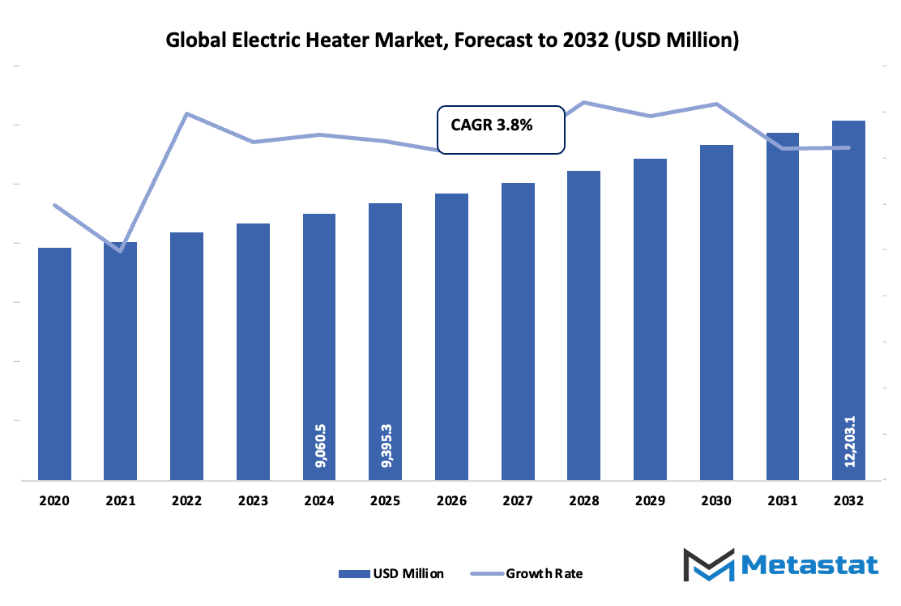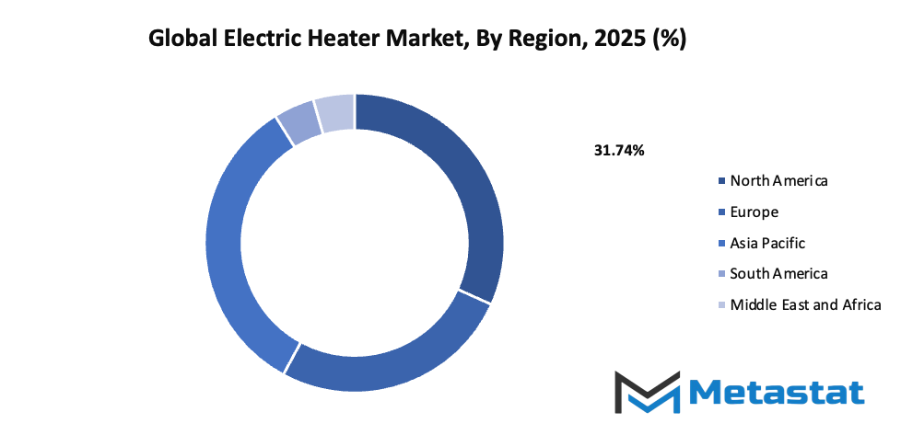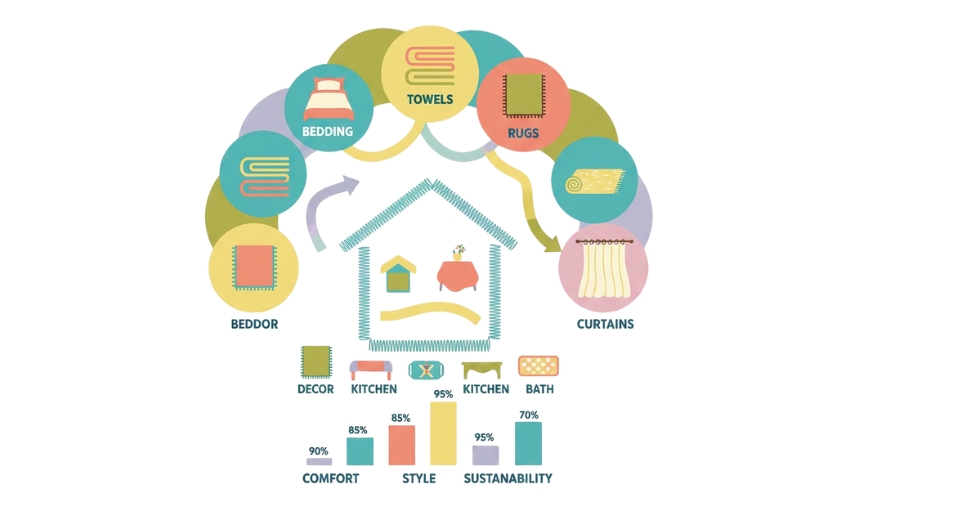Global Electric Heater Market - Comprehensive Data-Driven Market Analysis & Strategic Outlook
The global electric heater market evolved from a simple industrial necessity to a sophisticated industry affecting residences, workshops, and offices worldwide. In its nascent stage, electric heating occurred in the late nineteenth century when tinkerers were experimenting with how to transform electric power into heat using resistance wires. What had begun as an experimental idea to be used in the laboratory increasingly found its way into domestic and commercial settings as electricity itself became more accessible. The development of nichrome wire in the early 1900s was a breakthrough that offered Electric Heaters as safer, more efficient, and more durable options.
- Global electric heater market with an approximate valuation of USD 9395.3 million in 2025, growing at a CAGR of about 3.8% from 2025 to 2032, with the possibility of reaching more than USD 12203.1 million.
- Band Heaters hold about 23.5% of the market share, fueling innovation and wider applications through rigorous research.
- Key trends driving growth: Increase in demand for easy and effective home heating solutions, Increase in adoption of electric heating in industrial and commercial sectors
- Opportunities are: Emerging convergence of smart and efficient Electric Heaters with IoT connectivity
- Key insight: The market will develop exponentially in value over the next decade, with massive opportunities for growth.
- Since the mid-twentieth century, the economy has been gaining momentum as post-war nations upgraded their infrastructure.

Industrial locations needed precise temperature control, and domestic customers wanted convenient and clean heating sources. The convergence of all these demands started to define the nature of the world Electric Heater industry. The 1970s energy crises then altered the speed of change, with companies starting to focus on designs that were energy-efficient and could provide the same comfort with reduced consumption. This was the era of thermostatic controls and automatic cut-offs in safety, not just enhancing performance but also revolutionizing world safety standards. As industries grew more mechanized and computerized technology gained footholds in manufacturing routines, Electric Heaters surpassed the primitive coil-operated rationale. Microprocessor-based temperature control and advanced materials turned Electric Heaters into intelligent, adaptive appliances by the late 1990s. It reflected greater trends in consumer culture—customers didn't simply desire heat but control, accuracy, and environmental responsibility. The shift towards smart grid compatibility and integration of renewables over the past few years is an extension of this incremental progress. Carbon reduction, energy efficiency, and regulatory requirements for safety have also shaped the direction of the market.
The governments in the European, North American, and Asian markets imposed standards that promoted low-emission and recyclable products, creating pressure on companies to reconsider the conventional designs.
In the future, the global electric heater market will keep redesigning conversion and delivery of energy for heat. Joined-up technologies, high-performance composites, and clean manufacturing processes will define the new potential, and it will be not only a product line but a changing marker of the manner populations weigh comfort, technology, and sustainability.
Market Segments
The global electric heater market is mainly classified based on Type, Application, Distribution Channel.
By Type is further segmented into:
- Band Heaters: Band heaters are used extensively in the manufacturing industry to heat cylindrical surfaces. Heaters ensure consistent heat transfer and are suitable for applications that demand constant temperature regulation. Their compact size and efficient operation make them an ideal choice for small to medium-sized equipment, with benefits of energy conservation and consistent performance.
- Cartridge Heaters: Cartridge heaters are tubular heating units placed in holes drilled into devices for local heating. They have a high watt density, and this makes them useful where there is a requirement for precise heating. They have uses in tooling, plastics, and packaging equipment to provide fast heat-up times and consistent performances in industrial processes.
- Foil Heaters: Foil heaters are flexible, thin heating elements that can be mounted on different surfaces. They are applied for the purpose of uniform heat distribution and are typically used in space-limited applications. Lightweight, they are perfectly suited for electronic equipment, medical devices, and surface heating applications.
- Tubular Heaters: Tubular heaters are generic heat equipment for heating air, liquids, and surfaces. They are long-lasting and can be formed into any shape as per the need based on applications. These heaters are widely accepted in industrial uses due to their high efficiency, longevity, and ability to function under severe operating conditions.
- Strip Heaters: Strip heaters are planar heating elements with heat conduction over a large surface area. They are usually employed for the heating of tanks, molds, and metal surfaces. They are simple to install due to their design and offer uniform temperature control, which makes them suitable for continuous and batch process applications.
- Duct Heaters: Duct heaters are placed in air ducts to provide uniform heating for air handling systems. They provide controlled air temperature for commercial, industrial, and residential spaces. They ensure that they provide efficient heating while allowing integration with existing HVAC systems easily, making them indispensable for air treatment systems.
- Coil Heaters: Coil heaters find application in situations where direct heat and concentrated heat are needed. Coil heaters are commonly applied in extrusions, packaging, and mold heat. Coil heaters are appreciated for their low size, quick response, and energy-efficient application in industry.
- Other: Other categories include specialized Electric Heaters that do not fit into general categories. The heaters are designed to suit particular operating conditions for special industrial, commercial, or laboratory use. They give non-standard heating solutions and effectively fulfill niche market demands.
By Application the market is divided into:
- Chemical & Plastics Industry: Electric Heaters depend on the plastics and chemical industry for controlling process temperatures and enhancing product quality. They are employed in extruders, molds, and reactors for free-flowing applications. They help in enhancing process efficiency with their stable heat output and consume power.
- Pharmaceutical Industry: Pharmaceutical Electric Heaters are required in the pharmaceutical industry to accommodate temperature-sensitive operations. They provide controlled conditions for production, storage, and research of drugs. A trustworthy heater ensures adherence to stringent regulatory standards and product integrity during processing.
- Transportation: Electric Heaters are utilized in the transportation industry for purposes such as cabin warm-up, battery warm-up, and component protection. Effective heating systems improve vehicular working performance and provide security and convenience in bad weather.
- Appliances: Electric heating is practically a common feature in residential and commercial appliances for room heating, cooking, and hot water heating. They are compact in size, simple to install, and effective, which makes them an essential feature of day-to-day appliance usage, providing energy efficiency and reliability.
- Other: This category comprises industries and applications that need Electric Heaters for specialized processes. Examples of such industries are food processing, construction, and electronics production. Specialized heater solutions offer accurate heating, operational efficiency, and safety for varied industrial applications.
By Distribution Channel the market is further divided into:
- Online Retail: Online retail provides a convenient platform for purchasing Electric Heaters, offering a wide variety of products and brands. Customers can compare specifications, read reviews, and order products with doorstep delivery. The digital platform enhances accessibility and allows faster market reach for manufacturers.
- Offline Retail: Offline retail involves physical stores where customers can directly purchase Electric Heaters. It allows buyers to assess product quality, consult sales representatives, and receive immediate support. This channel remains important for regions with limited online access and provides hands-on experience before purchase.
|
Forecast Period |
2025-2032 |
|
Market Size in 2025 |
$9395.3 Million |
|
Market Size by 2032 |
$12203.1 Million |
|
Growth Rate from 2025 to 2032 |
3.8% |
|
Base Year |
2024 |
|
Regions Covered |
North America, Europe, Asia-Pacific, South America, Middle East & Africa |
By Region:
- Based on geography, the global electric heater market is divided into North America, Europe, Asia-Pacific, South America, and the Middle East & Africa.
- North America is further divided into the U.S., Canada, and Mexico, whereas Europe consists of the UK, Germany, France, Italy, and the Rest of Europe.
- Asia-Pacific is segmented into India, China, Japan, South Korea, and the Rest of Asia-Pacific.
- The South America region includes Brazil, Argentina, and the Rest of South America, while the Middle East & Africa is categorized into GCC Countries, Egypt, South Africa, and the Rest of the Middle East & Africa.

Growth Drivers
- Growing demand for efficient and convenient home heating solutions: The global electric heater market will benefit from the increasing need for heating solutions that are easy to use and maintain. Homeowners are looking for systems that provide warmth quickly and reliably without complex installation or maintenance requirements.
- Increasing adoption of electric heating in industrial and commercial sectors: Industries and commercial buildings are shifting toward electric heating to ensure consistent temperature control and reduce dependency on traditional fuels. This adoption supports operational efficiency and aligns with trends of reducing carbon footprints in commercial operations.
Challenges and Opportunities
- High electricity consumption leading to increased operational costs: One challenge for the global electric heater market is the high energy usage associated with electric heating, which can result in increased electricity bills for both homes and businesses. This factor can slow market growth if not addressed through efficiency improvements.
- Availability of alternative energy-efficient heating systems such as heat pumps: Competing systems like heat pumps provide energy-efficient heating alternatives that may limit the adoption of traditional Electric Heaters. Market players will need to focus on innovation and differentiation to remain competitive.
Opportunities
- Rising integration of smart and energy-efficient Electric Heaters with IoT connectivity: The global electric heater market will see opportunities from the integration of smart technologies that allow remote control and energy monitoring. IoT-enabled heaters offer convenience, improved energy management, and increased appeal to tech-savvy consumers.
Competitive Landscape & Strategic Insights
The global electric heater market shows strong growth potential as technology continues to advance and energy efficiency becomes a major focus across industries. The industry is a mix of both international industry leaders and emerging regional competitors that are shaping the market’s direction. Important competitors include Tutco, Zhenjiang Dongfang Electric Heating Technology Co., Ltd, Thermal Corporation, Omega, Zoppas Industries, Durex Industries, Friedr, Watlow, Nibe, Electron Systems, Sunrise Products, HEATCO, and Thermon. Each of these companies plays a significant role in developing new heating solutions that meet the rising demand for reliability, precision, and energy-saving performance.
The market growth is influenced by the increasing need for heating systems in industrial manufacturing, residential buildings, and commercial facilities. As industries strive to reduce carbon emissions, Electric Heaters have become a preferred alternative to traditional fuel-based systems. These heaters are known for their ability to convert electrical energy into heat efficiently, which helps lower operational costs while maintaining consistent temperature control. Companies in the market are investing in innovative designs and advanced materials to enhance performance and lifespan, making Electric Heaters more adaptable for various applications.
Another key factor driving development in this market is the focus on smart technologies. The integration of digital control systems and sensors allows for more accurate temperature regulation and automated operation. This trend reflects a shift toward smarter, connected heating solutions that can optimize energy consumption and provide real-time data for maintenance and monitoring. In the future, advancements in artificial intelligence and the Internet of Things are expected to further improve system efficiency, creating more sustainable and user-friendly heating solutions.
Competition among leading and regional players continues to intensify as more companies enter the field with specialized products tailored for specific industrial needs. Large corporations such as Watlow, Nibe, and Zoppas Industries are expanding their presence through product diversification and strategic partnerships. Meanwhile, regional manufacturers like Zhenjiang Dongfang Electric Heating Technology Co., Ltd and Sunrise Products are strengthening their market position by offering cost-effective solutions that meet local demands. This balance between global leaders and local innovators contributes to a dynamic and competitive market environment.
Market size is forecast to rise from USD 9395.3 million in 2025 to over USD 12203.1 million by 2032. Electric Heater will maintain dominance but face growing competition from emerging formats.
From a futuristic viewpoint, the global electric heater market is likely to see stronger growth driven by renewable energy integration and sustainability initiatives. The shift toward clean energy sources will encourage the use of electric heating systems powered by solar or wind energy, reducing dependence on fossil fuels. As industries modernize and adopt automation, Electric Heaters will play a crucial role in maintaining efficient and controlled production processes. The ongoing innovation among companies such as Tutco, Thermal Corporation, and HEATCO suggests that the future of this market will center on smarter, safer, and more energy-efficient heating technologies that align with environmental goals and the needs of modern industry.
Report Coverage
This research report categorizes the global electric heater market based on various segments and regions, forecasts revenue growth, and analyzes trends in each submarket. The report analyses the key growth drivers, opportunities, and challenges influencing the global electric heater market. Recent market developments and competitive strategies such as expansion, type launch, development, partnership, merger, and acquisition have been included to draw the competitive landscape in the market. The report strategically identifies and profiles the key market players and analyses their core competencies in each sub-segment of the global electric heater market.
Electric Heater Market Key Segments:
By Type
- Band Heaters
- Cartridge Heaters
- Foil Heaters
- Tubular Heaters
- Strip Heaters
- Duct Heaters
- Coil Heaters
- Other
By Application
- Chemical & Plastics Industry
- Pharmaceutical Industry
- Transportation
- Appliances
- Other
By Distribution Channel
- Online Retail
- Offline Retail
Key Global Electric Heater Industry Players
- Tutco
- Zhenjiang Dongfang Electric Heating Technology Co.,Ltd
- Thermal Corporation
- Omega
- Zoppas Industries
- Durex Industries
- Friedr
- Watlow
- Nibe
- Electron Systems
- Sunrise Products
- Durex Industries
- HEATCO
- Thermon
WHAT REPORT PROVIDES
- Full in-depth analysis of the parent Industry
- Important changes in market and its dynamics
- Segmentation details of the market
- Former, on-going, and projected market analysis in terms of volume and value
- Assessment of niche industry developments
- Market share analysis
- Key strategies of major players
- Emerging segments and regional growth potential








 US: +1 3023308252
US: +1 3023308252






